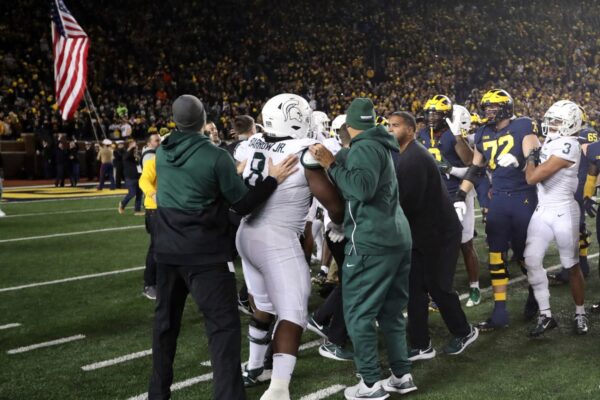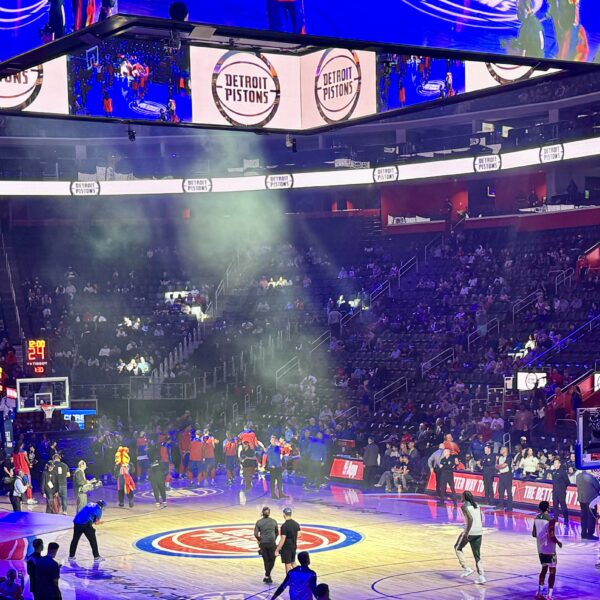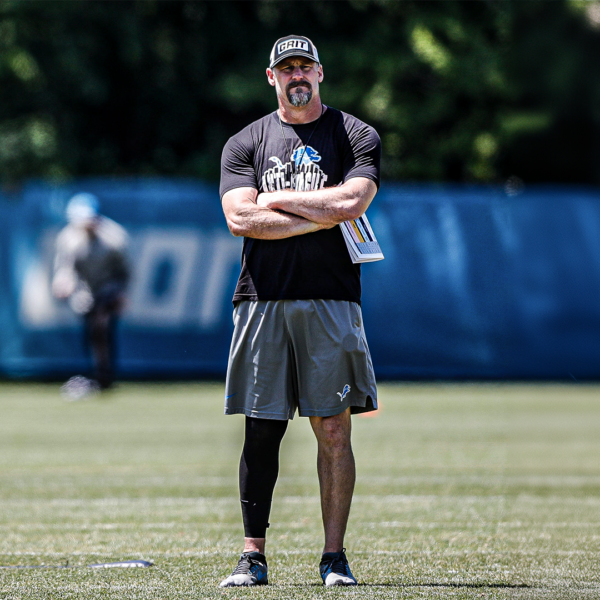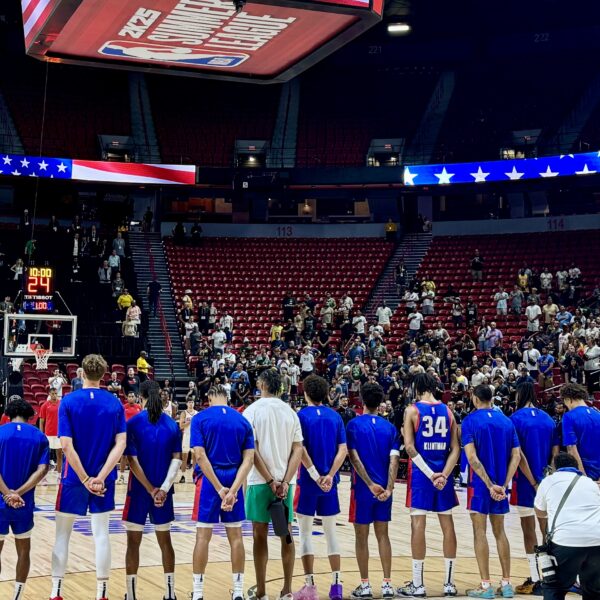Michigan Stadium is one of the few places left in American sports where the home and visiting teams use the same tunnel to enter and exit the field. A design popular in venues built in the early 20th century but rare now.
Separate tunnels lead to and from the locker rooms in most stadiums built within the last 40 years, eliminating the possibility of an ugly scene unfolding like the one minutes after Saturday night’s Michigan State-Michigan game.
“It’s a non-issue in new design. It doesn’t exist,” said Russ Simons, a stadium operations and design consultant and managing partner of Tennessee-based Venue Solutions Group.
Simons said giving teams their space with separate tunnels is one of the benefits of modern stadium designs. Which usually feature larger and more plush locker rooms than the small and spartan locker rooms in old stadiums. Renovations can be expensive and complicated.
Among the college football stadiums with single-tunnel access to locker rooms are those at Michigan (1927), Michigan State (1923), Rutgers (1994) and Stanford (2006). Teams also enter and exit through a single tunnel at the Los Angeles Memorial Coliseum (1923), where Southern California plays. Also the Cotton Bowl (1930), the Dallas site of the annual rivalry game between Oklahoma and Texas.
In the NFL, stadiums in Buffalo (1973), Detroit (2002) and Kansas City (1972) have home and visiting teams use the same tunnel.
Michigan State has suspended eight players for their roles in the tunnel melee that broke out after fourth-ranked Michigan beat the Spartans, 29-7. Michigan coach Jim Harbaugh said defensive back Gemon Green and teammate Ja’Den McBurrows were roughed up after the Wolverines beat their in-state rival for the first time in three years.
It was the second straight game at Michigan that included a tunnel dispute. Michigan players said Penn State players threw peanut butter and jelly sandwiches at them as the teams headed to the locker room at halftime of a close game the Wolverines won 41-17 on Oct. 15.
There also was a halftime confrontation in the Michigan Stadium tunnel at halftime of last year’s game against Ohio State.
Michigan has a protocol intended to keep the Wolverines and their opponents from mixing on their way to and from the field. Teams leave their locker rooms at different times to go through the tunnel for the start of the game. At halftime, the visiting team goes in the tunnel first; the Wolverines are supposd to wait for the visiting team and staff to completely enter the tunnel. Visitors turn left at the end of the tunnel, Michigan players and staff turn right.
Keeping the teams separate after the game is more difficult because some players choose to stay on the field longer than others. That tends to factor into other concerns about safety when fans rush the field and the Southeastern Conference is studying the issue after recent celebrations at Tennessee and LSU.
“If circumstances, either by accident or deliberately, create the confluence of the two teams in the tunnel simultaneously,” Simons said, “then it’s hard to imagine a set of circumstances where two groups of people who have been battling in an inherently violent sport for three-and-a-half or four hours coming together in a confined space wouldn’t lead to some form of energy.”
Coaches are aware of the pitfalls
Rutgers coach Greg Schiano said this week that a second tunnel is planned at SHI Stadium but he did not give a timeline. Schiano said he knows of no tunnel incidents in his 14 years over two stints at Rutgers.
“I think our guys do a great job with who goes (through the tunnel) when and it’s all very controlled. And maybe some people feel like it’s too controlled but, case in point, it needs to be controlled,” Schiano said. “That’s just the way we are built right now. There will be a day when we have two tunnels. I’m not worried about that. But right now this is the way we’re built so this is the way we’ll do it. But we have a plan, that’s for sure.”
Fisticuffs have always been part of football, and most surely have gone unreported.
Notre Dame, one of the college game’s most iconic brands, was involved in well-publicized homefield scrums in 1988 and ’89. Neither occurred inside the lone tunnel used by both teams until one for the visitors was built in 2017.
The first occurred before kickoff in Notre Dame’s 31-30 win over defending champion and top-ranked Miami. The Hurricanes were accused of walking through a Notre Dame drill on their way back to their locker room.
In 1989, Southern California and Notre Dame got into a skirmish near the same spot. As both teams were about to enter the tunnel following warmups.
Miami coach Mario Cristobal was an offensive lineman for the Hurricanes from 1989-92 and part of the storied series with Notre Dame that ended in 1990 after run-ins between players and between fans.
“It’s not part of the game, man. It’s just not,” Cristobal said this week. “Football is a physical, sometimes violent sport, super-high energy right through the roof. I mean, emotions, passionate, like boom, right? You want to go and dominate someone and people say ‘kick their butt’. But you always want to be able to do it in a football manner. And leave it football-wise and never let that spill outside.”
___
By ERIC OLSON AP College Football Writer
AP Sports Writers Tom Canavan, Josh Dubow, Jim Vertuno and Tim Reynolds contributed.
Photo: © Kirthmon F. Dozier / USA TODAY NETWORK








